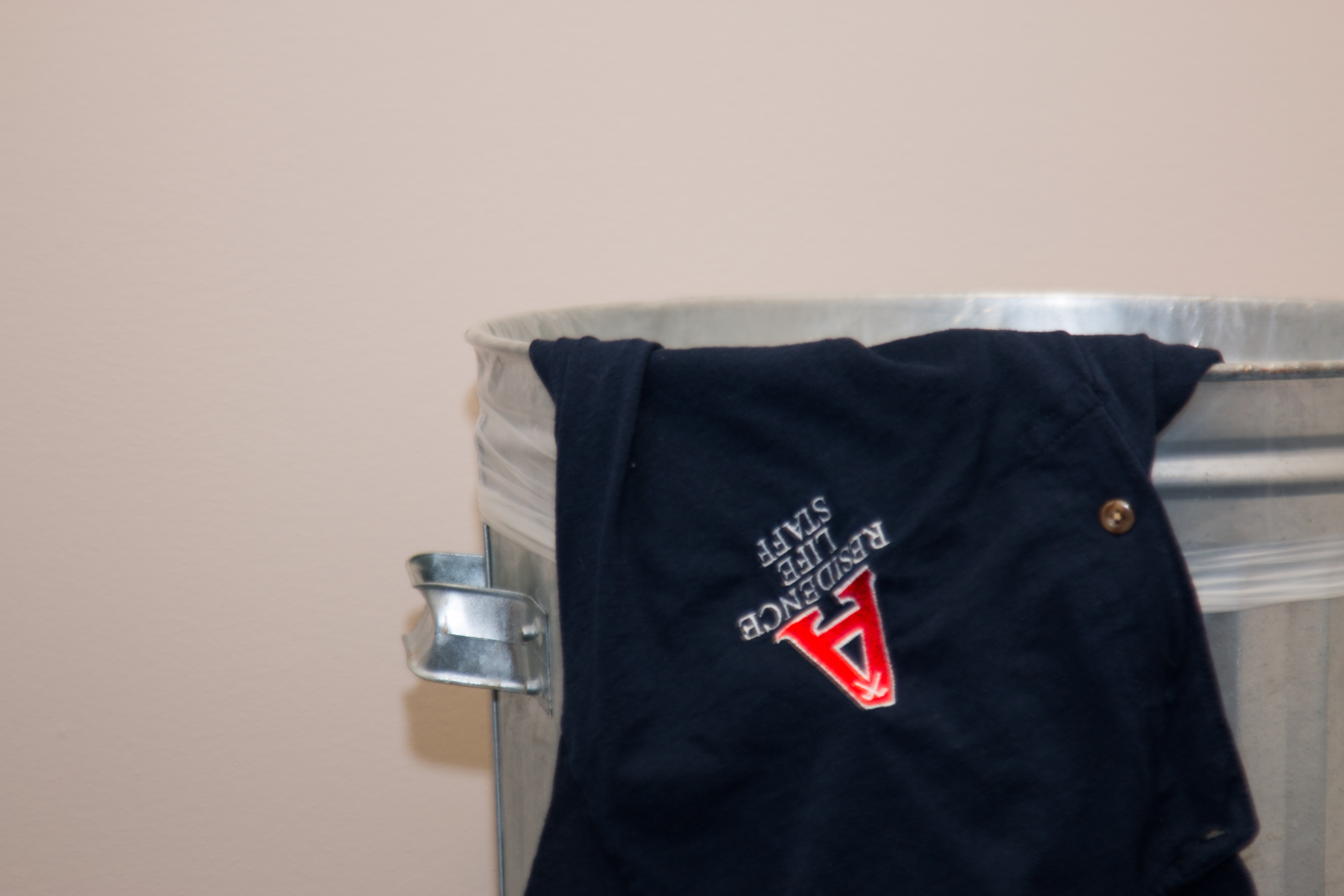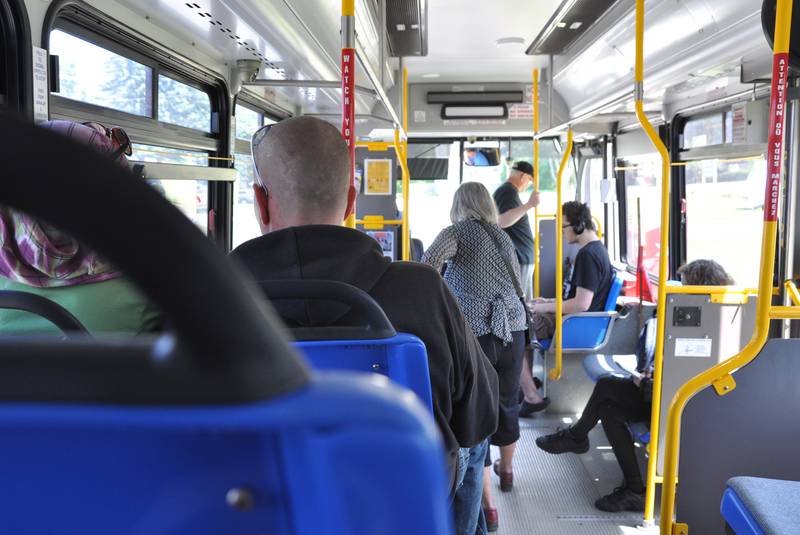Note from the Editor: Marcel Falkenham is the Director of Facilities at Acadia University. During his tenure here, the university has seen some remarkable improvements in sustainability efforts across campus. Through this piece, the Athenaeum hopes to illuminate some of those improvements as well as open some discussion on what the future might look like.
1. Tell me a little bit about the sustainability projects that you have overseen at Acadia since you’ve been here. What are you most proud of?
I arrived at Acadia in the summer of 2007 as the university was in the early implementation stages of a “Sustainability through Facilities Innovation” performance contract with Johnson Control Inc. This project consisted of multiple improvement measures targeted towards improving energy efficiencies while reducing deferred maintenance and renewing some key capital equipment.
Some of the campus wide initiatives included lighting upgrades from T12 and incandescent lamps to T8 and compact fluorescents in areas that had not been renovated, and upgrading plumbing fixtures to reduce water consumption or going water free where possible. There were several building specific initiatives such as installing a new ice plant for the arena that sent rejected heat from the compressors to be used in preheating incoming ventilation air and pool water. Other building projects that were part of that contract included heat recovery in the Huggins and Elliott Hall labs and a number of heating system flushes in larger buildings to remove scale and improve heat transfer. All in all, annual cost savings were calculated to be $600,000 which was used to pay for the capital costs of implementation.
Since that broader initiative I have been able to complete a number of other sustainability projects on campus by working with other agencies including Efficiency Nova Scotia. We have been able to achieve real energy savings while also reducing maintenance requirements and in many cases improved the aesthetic and functionality of the systems we addressed. Probably the most visible would be the exterior lighting upgrades to LED as technology came available and improved to the point where paybacks were measured in months instead of years. We had participated in some smaller retrofits in partnership with Efficiency NS in several areas on campus including the Student Union Building, Michener and MacKeen Rooms, as well as Clark Commons with early generations of LED lamps – building on the success of those small projects to justify moving larger scopes.
The Grad Class of 2013 then used their class gift to help us upgrade the 8 pathway lights in the main Quad behind University Hall to new LED post tops, taking advantage of a supplier incentive which allowed us to get the fixtures at about half the regular price. The impact of the quality of light from these new fixtures and the improved aesthetic was a huge win and we were able to use it to help justify a continuation across campus with help from Efficiency NS. The gains on this were threefold: Energy savings were at least 50% per fixture at 75W vs 150W previously, the lifespan of the lamps were increased by a factor of ten – 100,000 hours vs 10,000 hours previously – and the quality of the light was dramatically improved. You could actually recognize people’s faces after dark instead of the “blob” that was visible with the old high pressure sodium lighting. As a side, the new fixtures were night sky compliant with no spill over to obstruct star visibility which is also a win. By the end of the summer of 2013 we were able to retrofit about 90% of the outdoor fixtures resulting in an annual savings of over 500,000 kWh, which while always a win was almost a side note when compared to the improved feel of campus after dark. The running joke is that we won’t need to change a lamp until at least after I retire which is still a way off at best.
Probably the highest impact project on sustainability that we have successfully implemented in my time here has to be the conversion of our Central Heating Plant from Bunker C oil fired to Natural Gas. While not obvious to many and operating in the background, this was a huge undertaking that required the complete retrofit of all four boilers and construction of a Natural Gas delivery site and pipeline to the boiler room… all while maintaining steam production uninterrupted year round to our entire campus. Obviously, Natural Gas is still a fossil fuel and therefore not renewable, but the improvement in overall emissions profile when compared to the Bunker C oil that had been used since the 1950s is something we should be proud of. In the first year alone of using Natural Gas (which actually had a fair bit of light oil usage in the early part as we were commissioning the new systems), our Sulfur Dioxide emissions dropped over 60% which is almost 45 tonnes while our Particulate and Nitrogen Oxide emissions dropped about 25%. Carbon Dioxide emissions were reduced almost 30% which equates to almost 4000 metric tonnes for the year. For reference, that is equivalent to taking almost 1000 cars off the road. We are expecting even more reductions in this past year as we were able to run almost exclusively on natural gas as the initial conversion challenges were overcome. While not as high profile or visually impressive as some of the other measures we have made on campus, this has to be hands down the most significant improvement in sustainability.
2. Tell me a little bit more about the design of the new biology building, and the initiatives that it has underwent to become LEED-certified. What exactly does LEED-certified mean?
LEED stands for Leadership in Energy and Environmental Design and is a rating system for green buildings. Essentially there are points available across a variety of categories from site selection to materials used for construction to indoor air quality. Some of the points are fairly simple to earn such as having bicycle racks and designated carpool parking spots to encourage alternative transportation, while others can be much more involved. An example of the more difficult points to achieve would be tracking of construction waste which required every load of waste and recycling to be weighed and tracked to ensure diversion targets were met. All points need to be validated and awarded by a LEED accredited third party consultant.
The Biology building was designed to the LEED Gold standard and as such would have been one of the first science buildings in Canada to target such a goal. It was about 50% complete when I arrived on campus in 2007 and I was able to be involved in the fitout and commissioning phases of the new facility. There were many features incorporated in the Biology Building that were at least partially driven by the LEED process. The use of geothermal cooling, the capture and use of rainwater for non-potable water in the building, realtime monitoring of indoor air quality in all spaces and extensive use of natural and high recycled material content products for construction. Overall the LEED standard has some very good principles that we try to apply in all projects going forward but as with any consultant intensive initiative there are significant costs associated with the process that I feel can sometimes be better applied to actual sustainable projects and practices.
3. Apart from obvious funding limits, what are some challenges to making Acadia a green campus?
One of the bigger challenges with our beautiful campus is the age and variety of buildings and infrastructure. Our buildings range in age from 8 years old to almost 200 years old, so obviously the construction type varies widely. Strategies for sustainability therefore need to be tailored to the target areas and what works in one building doesn’t always work in another. As a fully operational campus, even if funding were unlimited it is not as simple as flicking a switch and being green. Everything needs to work around our ongoing campus activities and be planned and implemented in such a manner as to minimize disruption to our core mission as an institution of higher learning. While not always easy, we have had great track record of making incremental improvements while minimizing impact on day to day operations and plan to continue in this way moving forward.
Keeping up to date with emerging technology trends that may have significant impacts on sustainability is also a challenge. We were early adopters on the LED lighting front as highlighted earlier, but we have also been working on more “behind the scenes” initiatives as opportunities arise from new technologies. One of the more recent examples of this is the availability of hybrid heat pump hot water heaters. While most of our buildings rely on our steam system to provide hot water, several buildings with lower consumption are actually more efficient to run with electric hot water heaters. The hybrid hot water heaters use an integral heat pump to heat the water instead of a straight electric resistance element and use less than half the amount of electricity to do this. We have retrofit a couple dozen of these units in buildings ranging from smaller academic facilities like Rhodes Hall up to larger facilities such as the Beveridge Arts Centre. We were one of the only institutions that I am aware of to take advantage of this technology and it has been very successful to date.
The biggest challenge aside from resource availability is education and awareness. Keeping incoming students, staff and visitors educated on things as simple as waste sorting and reducing energy consumption is something that is ongoing and requires a lot of work. On the bright side efforts have been paying off, our diversion rates from landfills have consistently tracked over 70% which is well above the provincially legislated goal of 50%. Every year we see the trend where the numbers dip at the start of the term and then steadily improve as the year progresses and new members of the campus community become more knowledgeable on how to sort and recycle.
4. In the future, where do you see Acadia going in terms of sustainability? What sort of projects are you working on now, and hope to accomplish?
We have made some great progress but obviously have a way to go to becoming truly green. With the current funding constraints that all universities are facing, I expect to continue on the incremental improvement path but there are some exciting technology developments on the horizon. We are currently working to continue upgrades to LED lighting as opportunities arise and efficiency improvements in mechanical systems are always on our mind. We do try to keep sustainability in mind for all projects and incorporate energy efficiency improvement in the planning stages. One case and point is the new Stevens High Performance Centre varsity locker room project at the Athletics Complex which we plan to start this spring. While this is an addition to the existing complex it requires largely independent mechanical systems for heating and ventilating, but we are working with the consultant engineers to use the glycol lines that are heated by waste heat from the adjacent ice plant to provide the heat source for the in floor radiant heat and ventilation units. This would provide the majority of the heat for the almost 8000 ft2 facility for virtually free. As renewables such as solar become more efficient readily available I hope that we can incorporate them more into our facilities as the paybacks shorten but this will take time given the capital requirements associated. In the interim, managing and improving our consumption has the better payback and we will continue to identify and implement as opportunities come up.





